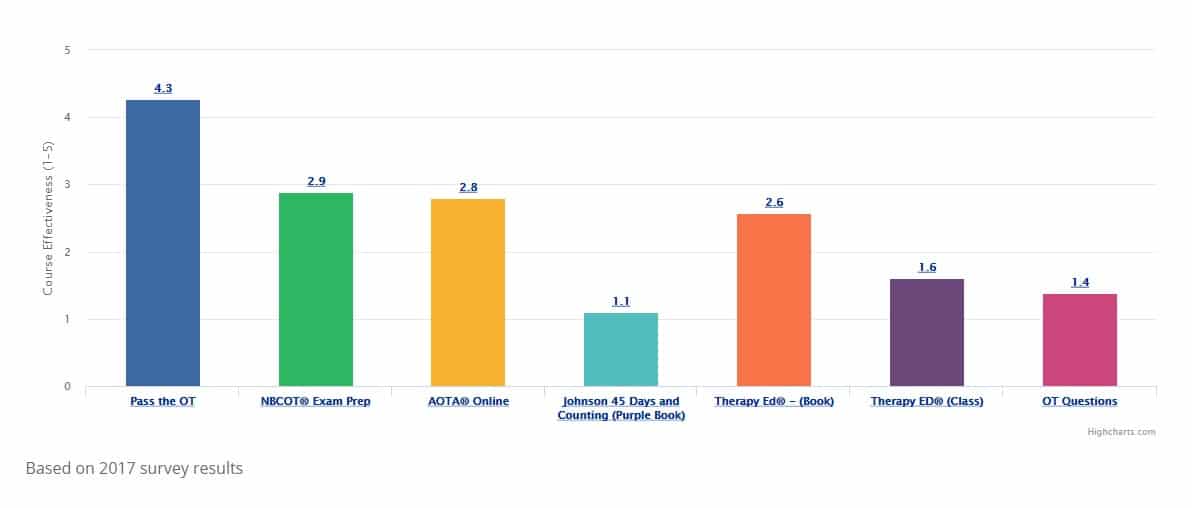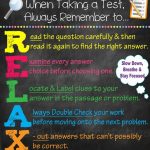| LOOK AT EACH QUESTION AS A STORY.
Summarize what you are being asked in the core question. |
Use your own word to summarize the scenario/story.
Do not insert any additional information into the question.
– only use the information that is directly provided to you.
– don’t add to the story, don’t make things up, and don’t make assumptions.
Then: Make clear and concise decisions.
YES or NO to each answer choice. |
| IMPORTANT INFORMATION
|
Type of Setting (acute, inpatient, outpatient, school, etc.)
Target Population (babies, adolescent, senior)
Diagnosis (new/acute, chronic, progressive, auto-immune, degenerative, mental health)
Presented Symptoms PROVIDED (fatigue, weakness, pain, hypersensitivity, decreased ROM.)
Patient/Caregiver Goals: patient-centered
Direct Quotes: be client-centered |
| WORKING OUT THE CORRECT ANSWER |
|
| TIME CONTEXT CLUES
Take note of the stage of the OT Process, and the stage of the patient’s diagnoses. I.e. Where you are in the OT Process of : Progressive Disease, Burn Stages/Phases, Splinting, etc.
|
OT Process:
Evaluation/Intervention
Initial/First
Next
Regular/monthly/periodic
Last
At DischargeStages of Disease/Injuries
Recently Diagnosed
At the Beginning/At the start
Immediately Following
Progressive Diseases:
Onset Of
Early Stage
Middle Stage
End Stage
Terminal StageSurgical Procedures
Pre or Post-Operative/Surgical/Prosthetic
Before/After/During Surgeries & Skin Grafts |
| KEY WORDS FOR SEVERITY OF SYMPTOMS
|
- Minor
- Mild
- Significant
- Substantial
- Moderate
- Severe
|
| ALERT WORDS – “ODD MAN OUT” |
Look out for these words:
Except
Contraindicate
At Risk
Least Helpful
Least Restrictive Environment
Least likely to be effective…. |
| ACTION OR ACTIVE WORDS:
Keep in mind: The patient is always an Active Participant in their Therapy Intervention.
|
The following verbs will give you an idea what therapeutic role you are meant to play, in the session:
Implement
Demonstrate
Train
Collaborate
Aid, Assist
Utilize
Facilitate
Mentor, Coach
Lead
Direct
Develop
Initiate, Introduce
Produce, Provide
Stimulate |
| WATCH OUT FOR THESE WORDS
Answer choices with these words are typically not the right answer choice because OT is not black and white. |
|
| BEFORE MOVING TO THE NEXT QUESTION |
|
| ASK YOURSELF
Have you picked the absolute best/most appropriate answer choice that addresses the problem in the question?
There is no need to highlight “Best” or “Most” as you should always automatically look for the BEST OPTION. |
Is your answer choice:
- SAFE?? – Always Safety First
- Ethical?
- Client is an ACTIVE PARTICIPANT?
- Client/Family Centered?
|
| SCOPE
Use this CHECKLIST
|
S– Safety – Always Safety First – make sure your answer choice SAFE
C– Client Centered – The patient/family is an ACTIVE PARTICIPANT
O-Occupation Based
P– Positive, doing good, beneficial, growth/progress
E– Ethical?
|
| 2 ANSWERS VERY SIMILAR
Answers that are basically the same but have different wording |
.
Eliminate BOTH right away.
|
| BRAIN FART |
|
| JUST DON’T KNOW THE ANSWER |
Strategy:
- Go with the answer choice with the most words or the longest response.
- Recognize patterns in a question/answer: sometimes the correct answer choice reflects the same words to clue you in.
- Every 30 Minutes: Rest your eyes. Close your eyes, take deep breaths, stretch for 30 seconds. MARATHON. This comes when you are pacing your timing, one minute per question AVERAGE, some will be shorter some slightly longer.
- Respect each question as you encounter it.
- DO NOT use the review button at all.
- Carefully consider answer choice and be able to rationalize why YOUR answer is correct.
- Pull out brain fart strategy and apply if you are taking too long.
- Reduce anxiety and move on.
- Do not dwell on questions you struggled with!!
- Come to peace NOW that you will not know every single answer.
- Answer and move on.
- It’s over, you will never encounter it again.
- Treat each question as an individual patient.
|
| MUSCULOSKELETAL/HAND/SPLINT/CARDIO |
|
| Be especially careful to consider TIME CONTEXTUAL CLUES |
How many days/weeks since initial injury?
How many days/weeks since initial Cardiac Event?
How many days/weeks since initial burn?
Assessment/Intervention based on this info…
E.g: Fx in week 2 different than intervention you choose 8-9 weeks post Fx. |
| CLINICAL SIMULATIONS |
Realize that these are all like the case studies in school |
| PATTERNS
Sections are patterned to simulate the actual OT progress of treating a client
|
Section A: Screening, Referral, Evaluation. Observations, assessments, ID client factors, symptoms, occupational profile, client’s current abilities.
Section B: Typically focused on interpretation of assessment results, making goals, responding to client/family concerns regarding evaluation findings, etc.
Section C: Focused on choosing most appropriate interventions based on findings made in Section B.
Section D: focused on patient education prior to discharge, discharge planning, recommending DME or other adaptive equipment |
| ALWAYS, ALWAYS, ALWAYS keep in mind any key words in the questions that offer information regarding TIME.
|
E.g:
- # of weeks post-surgery
- before/during/after
- pre or post
- week 2 or week 7
- onset/early/stage/initial/last/etc.
|
| SUMMARIZE AND HIGHLIGHT |
Highlighting should be limited to 6 or 7 clusters of key words, mostly pertaining to the opening scenario.
Summarize the opening scenario USING YOUR HIGHLIGHTED KEY WORDS on your grid paper.
Summarize useful feedback after ‘yes’ answers. |
| Pick definite YES ANSWERS |
FIRST (they are going to give you feedback if that was the right choice).
If it’s NOT: feedback will be provided on how the client responded.
THEN: pick your no responses
Totally unsure? Can’t use the test taking strategy or educated guess? Pick YES…will give you feedback that will help you answer this section. |
| THE POINT SYSTEM
Keep in mind that when answering a question, no points are deducted for an incorrect answer.
|
Point-wise, answering incorrectly is the same as not answering, so always pick something (whatever your strategy is). It’s the difference of maybe earning a point vs. definitely not earning a point because you did not answer.
Don’t leave any questions unanswered.
For both single choice and multiple-choice questions – you earn credit for getting a question correct, and no credit if you get it wrong or don’t answer.
In terms of strategy, you can opt to choose “yes” because even if it’s incorrect, you get feedback that might help with answering subsequent questions.
To develop a strategy that works for you, practise answering some CST questions. |





